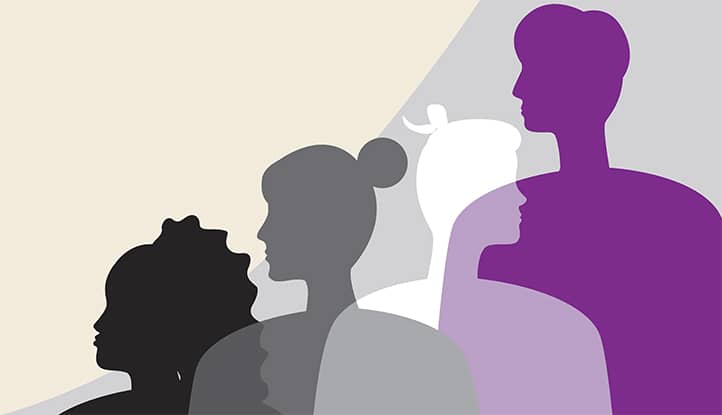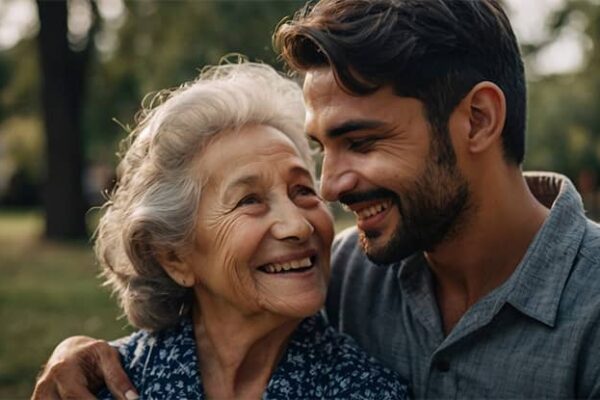Asexuality is a sexual orientation characterized by the absence of sexual attraction to others. It is part of the broad spectrum of human identities, and while it is becoming more widely discussed, it remains misunderstood or even doubted by many.
Unlike a temporary decrease in sexual interest due to stress, fatigue, or other external factors, asexuality is a stable trait that defines a person throughout their life. It is important to note that asexuality does not exclude the ability to feel romantic emotions, build relationships, or derive joy from emotional closeness.
This topic is particularly relevant in today’s world, where society still strongly associates love with sexuality. Media, pop culture, and literature create an idealized image of romantic relationships in which physical intimacy is often portrayed as the cornerstone of true love. In such a context, people with an asexual orientation frequently face misunderstanding, feelings of isolation, and even doubts about their normality. Therefore, discussing asexuality is essential not only for supporting these individuals but also for fostering a more open and tolerant society.
Understanding asexuality also provides insights into the diversity of human relationships. In a world where the importance of consent, mutual respect, and emotional closeness is increasingly emphasized, asexuality challenges established norms and invites us to reconsider what we define as the foundation of love.
Is sexual intimacy essential for happy relationships? How can relationships be built when physical closeness is not a priority? These questions are central to contemporary discourse, underscoring the importance of not only acceptance but also a deeper understanding of those whose needs and values differ from the mainstream.
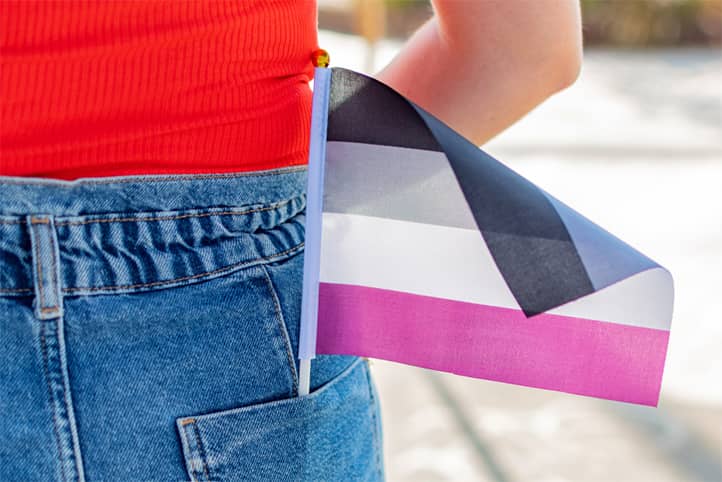
What Is Asexuality?
Asexuality is a form of sexual orientation characterized by the absence of sexual attraction to others. It is neither a disease, a disorder, nor a temporary condition but rather a natural part of the spectrum of human sexuality. Asexual individuals may have varying levels of interest in romantic relationships or intimacy, but what unites them is that sexual interaction is neither necessary nor desired in their lives.
It is worth noting that asexuality is not a choice or the result of certain life experiences. It is independent of age, gender, or cultural background. Asexual people can lead fulfilling lives without sex and do not experience internal conflict about it. However, society often misunderstands asexuality, perpetuating numerous myths and stereotypes that complicate self-acceptance for asexual individuals.
To better understand asexuality, it is important to dispel existing myths and analyze how it differs from other identities. This not only helps create a correct understanding of this orientation but also supports those who face misunderstanding or judgment due to their uniqueness.
Debunking Common Myths About Asexuality
- Myth: Asexuality is a disease or hormonal imbalance.
This is one of the most common stereotypes. In reality, asexuality does not have physiological or medical causes and does not require “treatment.” Asexual people can be perfectly healthy, both physically and psychologically. - Myth: Asexuals just haven’t met “the right person” yet.
This myth is based on the assumption that sexual attraction is universal. However, asexuality is not a temporary state or the result of inexperience; it is a stable characteristic. - Myth: Asexuals are incapable of love or being in relationships.
Love and sexuality are distinct concepts. Asexual people are capable of deep emotional connections built on trust, mutual respect, and shared values. - Myth: Asexuality is a form of protest or a choice.
It is not an ideological stance or a rejection of sex due to certain beliefs. Asexuality is a natural part of a person’s identity.
The Difference Between Asexuality and Other Identities
One of the key features of asexuality is that it does not necessarily exclude romantic relationships or emotional closeness. For example, aromantic individuals can be either asexual or sexual, depending on their attraction to others.
Asexuality should also be distinguished from celibacy or temporary abstinence from sex. Celibacy is a conscious choice, often dictated by religious or personal beliefs, whereas asexuality is an innate characteristic, not a choice.
Another important distinction is that asexuality has nothing to do with a lack of desire for closeness in general. Asexual individuals may seek friendships, partnerships, or love, but without a sexual component. This highlights the vast spectrum of human identity and emphasizes that all forms of love are equally valuable.

The Concept of Love in the Context of Asexuality
Love is a multifaceted and universal emotion that takes various forms depending on the individuals who experience it. For asexual people, love, just like for anyone else, is an essential part of life. However, for them, it is often devoid of a sexual component, which frequently leads to misunderstanding in society. In a culture where love and sexuality are usually tightly intertwined, it is important to recognize that intimacy and deep emotional bonds can exist without physical attraction.
For asexual individuals, love is often based on emotional, intellectual, and spiritual closeness. It may manifest in spending time together, providing support, trust, discussing important matters, or creating shared goals. In such relationships, physical intimacy may either be secondary or play no role at all, with the primary focus on mutual understanding and a sense of unity.
When considering the concept of love without a sexual component, we raise an important question: what truly defines relationships between people? Is the sexual aspect necessary to call a relationship love? For asexual people, the answer is clear: love is much more than sexuality. It is an emotion grounded in deep respect, shared values, and a willingness to share life with another person.
What is Love for Asexual People?
For asexual individuals, love is often associated with emotional depth, trust, and partnership. In such relationships, shared experience and care for each other take the central role. Many asexual people desire romantic relationships, but their ideas about the ideal partner may differ from mainstream concepts.
For example, some asexual individuals build their relationships around so-called “platonic unions,” where the physical aspect does not matter, and emotional support becomes the core value. Others may form relationships that involve romance but without sexual expressions. For them, it is important to find a partner who shares or understands their needs and desires.
Is Love Possible Without a Sexual Component?
Love without a sexual component is not only possible but also completely natural for many people, including asexual individuals. It is based on other aspects of intimacy that are no less important than physical attraction. For example, many asexual people create strong bonds based on shared values, trust, genuine care, and support.
In such relationships, partners find pleasure in simple things: discussing books, traveling, spending time together, or even quietly being in each other’s presence. These bonds are no less meaningful than those that include a sexual component. On the contrary, they highlight the multifaceted nature of human relationships and demonstrate that love can be deep even without a physical aspect.
Emotional, Intellectual, and Spiritual Closeness as the Foundation of Relationships
For asexual individuals, emotional closeness is a central component of love. It is the feeling of mutual understanding, where you can fully trust another person, knowing that you will be accepted as you are. Emotional support becomes the foundation that strengthens relationships even in the most difficult times.
Intellectual closeness also plays a significant role. For many asexual individuals, it is important to have shared interests, to discuss ideas, to grow together, and to share knowledge. This creates a sense of unity that is often even more significant than physical attraction.
Spiritual closeness, in turn, may manifest in a shared vision of life, similar moral values, or a search for common meaning in existence. For asexual individuals, these aspects become an inseparable part of relationships that do not depend on sexuality but are built on a deeper connection.
Thus, love for asexual people reveals an alternative approach to relationships, where physical manifestations are not as important as the ability to sincerely understand, support, and inspire one another. This emphasizes that love can exist in various forms and be equally valuable for everyone.
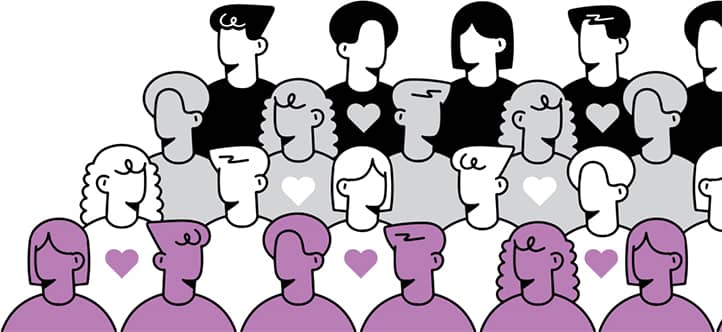
Challenges and Stereotypes
Asexuality, like any other minority sexual orientation, faces numerous challenges in society. While the discussion on the diversity of human sexuality is gaining momentum, asexuality still remains poorly understood and often misunderstood. In a society where sexuality is typically placed at the center of romantic relationships, asexuality is frequently seen as something strange, and at times even pathological. This gives rise to numerous stereotypes that complicate the lives of asexual individuals and impact their relationships, both romantic and social.
A particular difficulty arises from the impact of these stereotypes on the partners of asexual individuals. Due to the lack of understanding and support from society, such couples may face judgment, unnecessary questions, or even accusations. Asexuality challenges traditional views on love but at the same time opens new horizons, where emotional, intellectual, and spiritual closeness become the foundation of relationships.
How Does Society Perceive Asexuality?
In the modern world, sexuality is often considered an integral part of human identity. A person who does not experience sexual attraction may seem “unusual” or “incomplete.” Asexual individuals are frequently accused of being “cold,” “incapable of loving,” or simply “not having met the right person.” Such attitudes are based on deep stereotypes and a misunderstanding of the nature of asexuality.
Furthermore, due to a lack of awareness, the topic of asexuality is rarely discussed in media, education, or public discourse. This results in many people being unaware of the existence of this orientation. Asexual individuals often have to explain themselves to others, defending their right to be who they are.
There is also stigmatization of asexual relationships. Society may question the authenticity of such relationships because they do not conform to traditional ideas about love and sexuality. This is particularly difficult for couples who want to create a family or gain recognition from their families and friends.
Typical Stereotypes About Love Without Sex
- “Without sex, there is no real love.” This is one of the most deep-rooted stereotypes in a culture where sexuality is often equated with love. For many people, it is hard to imagine a relationship that does not include physical intimacy, although this does not mean the absence of feelings or mutual affection.
- “Asexual people just fear sex.” Some believe that asexuality is the result of traumatic experiences or a fear of intimacy. In reality, asexuality is a natural part of identity that is not related to external circumstances.
- “Asexual people cannot have fulfilling relationships.” This stereotype devalues the importance of emotional, intellectual, and spiritual closeness that forms the basis of many asexual relationships. It is essential to understand that every couple defines their priorities in relationships independently.
- “Asexuality is just a phase.” This stereotype dismisses the stability and permanence of an asexual identity. People with this orientation often have to prove that their condition is not something temporary or imagined.
How Do Partners Cope with Misunderstanding from Society?
For asexual individuals and their partners, misunderstanding from society can become a significant challenge. They often have to face questions like, “How can you be together without sex?” or “You’re not a real couple!” Such comments can create feelings of isolation and doubts about their relationships.
A key way to overcome this is through open communication between partners. It is essential to discuss needs, expectations, and boundaries to build a strong foundation of trust. Many couples also turn to asexual communities or support groups where they can find understanding and helpful advice.
Another effective method is raising awareness. Asexual couples who are willing to openly talk about their experiences contribute to breaking down stereotypes and fostering more tolerant attitudes in society. Support from friends and family also plays a crucial role in overcoming challenges related to social pressure.
Despite all the challenges, asexual people and their partners prove that love can exist in many different forms, and it is not necessary to conform to stereotypical ideas of what relationships “should be.” What matters is not how these relationships look from the outside but how happy the people building them feel.

Asexual Relationships in Practice
Asexual relationships are no less diverse and multifaceted than the relationships of people with any other sexual orientation. Despite stereotypes, asexual couples prove that intimacy and love do not necessarily have to include a sexual component to be complete and happy. In these relationships, the primary focus is on other forms of connection — emotional, intellectual, spiritual, or even physical intimacy that does not involve sexual attraction.
Successful examples of such relationships demonstrate that happiness and harmony in a couple do not require adherence to traditional societal norms. Asexual couples create their own rules, adapting them to their desires and priorities.
Examples of Successful Asexual Relationships
Successful asexual relationships can be found both among asexual people who choose partners with the same orientation and among couples where one partner is asexual, and the other is not. In each case, mutual respect, understanding, and a willingness to find compromises are key factors.
For example, in many asexual couples, romantic intimacy manifests through shared interests, support, and care for each other. Partners may plan trips together, engage in hobbies, or simply enjoy cozy conversations. Such relationships show that love does not always need a physical component.
There are also couples where one partner is sexual. In such cases, partners may agree on different ways to meet needs that work for both. For instance, through open relationships, compromises, or other arrangements. These examples illustrate that understanding and adaptation play a crucial role in building harmonious partnerships.
Different Forms of Intimacy and Their Importance
In asexual relationships, intimacy often goes beyond conventional notions of closeness. Its forms may include:
- Emotional intimacy. This is the ability of partners to feel comfortable and safe with each other. Mutual support, trust, and compassion create a sense of unity that compensates for the absence of a sexual aspect.
- Intellectual intimacy. The opportunity to discuss ideas, dreams, problems, and find solutions together strengthens the bond between partners. Intellectual conversations often become a source of inspiration and deeper understanding of each other.
- Physical intimacy without sexual attraction. This may include hugging, holding hands, kissing, or simply spending time together in physical proximity. For many asexuals, such expressions are essential for feeling close to their partner.
- Spiritual intimacy. Shared values, beliefs, or moral convictions can become the foundation for deep mutual understanding. This form of intimacy helps partners grow as individuals and achieve their goals together.
These forms of intimacy are not mutually exclusive, and their combination allows asexual couples to create unique and harmonious relationships tailored to their individual needs.
Communication as the Key to Healthy Relationships
Communication is the foundation of any healthy relationship, and for asexual couples, this rule is particularly important. Since asexuality often does not fit into conventional norms, open discussions about expectations and needs help avoid misunderstandings and conflicts.
- Discussing boundaries. Partners should clearly define which forms of intimacy are comfortable for them and which are not. This allows them to establish boundaries that both parties will respect.
- Finding compromises. If one partner in the couple is not asexual, it is important to find ways that satisfy both. This may include discussing alternative forms of intimacy or shared solutions to each partner’s needs.
- Openness and honesty. To avoid misunderstandings, partners should be honest about their feelings and expectations. Open conversations help build trust, which is the foundation of any relationship.
- Seeking external support. Sometimes couples may find it challenging to resolve certain issues on their own. In such cases, consulting a psychologist or engaging with asexual communities can be very helpful.
Communication allows partners not only to better understand each other but also to build relationships that are harmonious and meet their needs. Asexual couples show that with the right approach, love can be genuine and strong, even if it does not conform to traditional ideas about relationships.
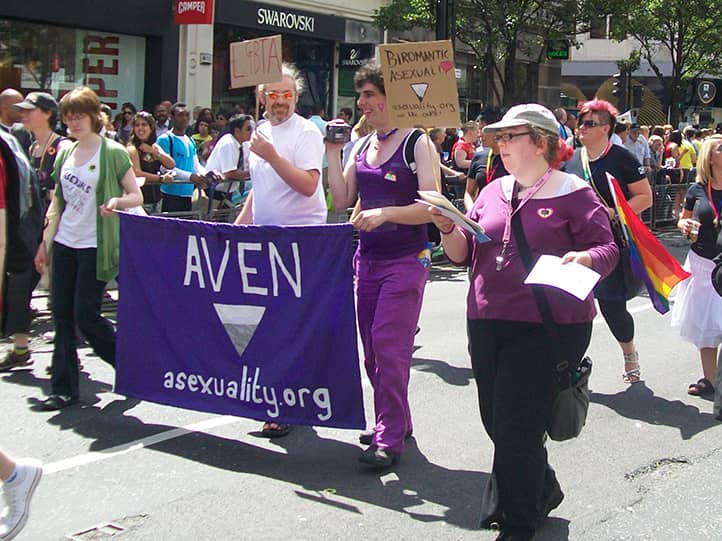
Support and Recognition
Asexuality, as a part of human identity, requires understanding, support, and recognition both in interpersonal relationships and at the societal level. In a world where sexuality often takes center stage, asexual people may feel isolated or inadequate due to a lack of understanding from others. This makes support especially important.
Society plays a significant role in creating conditions where asexual people can feel accepted and valued. Communities and platforms that help asexual people find like-minded individuals are crucial, as is the support of friends, partners, and family. Accepting asexuality as a normal and natural part of human identity not only improves the quality of life for asexual individuals but also promotes the development of a more tolerant society.
The Role of Communities and Platforms for Asexual People
For many asexual people, finding their place in a world that places immense importance on sexuality can be a challenging task. In such conditions, communities and online platforms become vital sources of support and information.
- Communities as a place of understanding. Communities for asexual people, such as AVEN (Asexuality Visibility and Education Network) and other online groups, provide a space where people can share their experiences, find like-minded individuals, and get answers to important questions. A sense of belonging to a community helps reduce isolation and strengthens self-esteem.
- Educational role of platforms. Many platforms actively work to debunk myths about asexuality and raise awareness in society. They offer resources, articles, personal stories, and other materials that help asexual people understand themselves and embrace their identity.
- Support groups. Online or offline support groups provide an opportunity to discuss challenging situations faced by asexual people and receive valuable advice. For example, how to respond to uncomfortable questions, explain one’s orientation to loved ones, or build relationships.
The role of these platforms cannot be overstated, as they help people not only find answers to their questions but also feel that they are not alone.
How to Support an Asexual Partner or Friend?
If there is an asexual person in your life, it is important to understand their unique needs and experiences. Support from loved ones is invaluable, especially if the person faces misunderstanding or judgment.
- Listen and do not judge. One of the most important ways to help is a willingness to listen without prejudice. Ask questions if the person is ready to discuss, but avoid pressure or attempts to “change” them.
- Respect their identity. Accepting your friend’s or partner’s orientation as natural and normal is key to support. Avoid comments like “it’s just a phase” or “you just haven’t found the right person yet.”
- Support their choices in relationships. If you are a partner of an asexual person, discuss boundaries and expectations. Finding compromises that satisfy both is entirely possible with open communication.
- Educate yourself. Learn more about asexuality to better understand what your loved one is going through. This demonstrates your interest and support.
- Be an ally. Defend the asexual person from judgment or discrimination. If you hear a stereotypical comment or joke, do not hesitate to intervene and explain why such remarks are inappropriate.
All this support not only strengthens trust but also helps the asexual person feel more comfortable in their relationships and in society as a whole.
The Importance of Social Acceptance and Support
Social recognition of asexuality as part of the spectrum of human sexuality is crucial for reducing stigmatization and isolation of asexual people. A tolerant and open society creates conditions in which everyone can be themselves without fear of judgment.
- Education as the basis of tolerance. Informing society about asexuality through media, educational programs, and campaigns helps break stereotypes. This is an important step toward creating a space where asexual people can openly discuss their identity.
- The role of allies. Allies who support the asexual community play a significant role in normalizing this orientation. These can be friends, relatives, or even public figures who express their support and help raise awareness.
- Legislative aspect. At the policy level, it is important to ensure equality and protection of asexual people’s rights. This includes recognizing their orientation in anti-discrimination laws and protection programs.
- Positive representation in media. The appearance of asexual characters in movies, TV series, or books helps make asexuality more visible. It is important that such portrayals are realistic and positive, as they shape society’s attitude.
Social support allows asexual people to feel freer, reduces stigmatization, and paves the way for building a more equitable world. The more people learn about asexuality, the easier it will be to accept it as a normal part of the human experience.
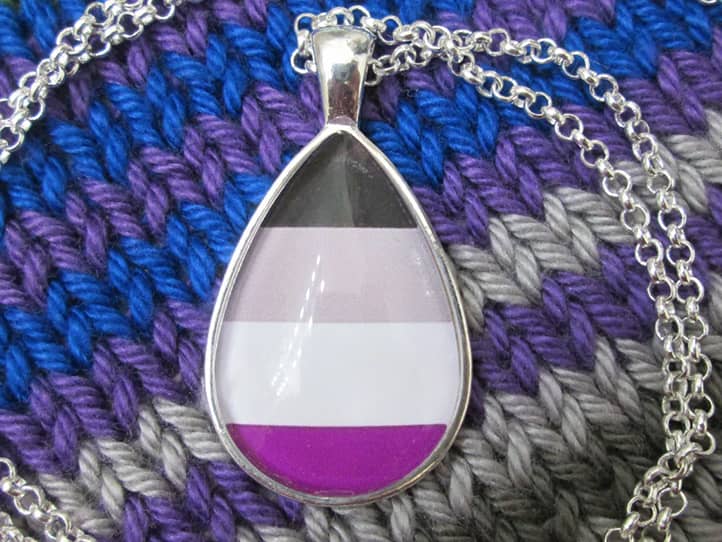
Conclusions
Love without sex is not only a possible but a completely natural way of relating between people, which does not diminish the value of relationships or feelings. Asexuality challenges established notions of love and reminds us that intimacy and closeness can be expressed in various ways. Emotional, intellectual, and spiritual interaction is no less significant than the physical aspect, and for some people, these forms of closeness are even more meaningful. Recognizing this fact is an important step toward building a society where everyone can live according to their feelings and identity.
Understanding diversity in relationships requires openness and tolerance. The world is not homogeneous, and everyone has the right to their path to happiness, whether or not it includes sexual intimacy. Accepting and supporting different forms of love helps break down stereotypes that limit our understanding of what it means to be happy in a relationship. Love is not a formula or standard but a mutual understanding, support, trust, and willingness to share one’s life with another person.
Society benefits from a more open and tolerant attitude toward diversity in relationships. This approach reduces discrimination, improves emotional well-being, and allows everyone to feel comfortable in their identity. When we embrace diversity, we create a world where love finds its unique path for everyone, regardless of expectations or prejudices. Love without sex is not a deviation from the norm but another form of expressing human closeness, which deserves existence and respect.
Recommended Reading
- “Understanding Asexuality” – Author: Anthony F. Bogaert. This book offers a scientific analysis of asexuality, examining it from biological, psychological, and social perspectives.
- “The Invisible Orientation: An Introduction to Asexuality” – Author: Julie Sondra Decker. This guide explains what asexuality is, debunks myths, and provides advice for both asexuals and their loved ones.
- “Ace: What Asexuality Reveals About Desire, Society, and the Meaning of Sex” – Author: Angela Chen. The book explores how asexuality challenges traditional ideas about sexual desire and intimacy.
- “Asexuality: Feminist and Queer Perspectives” – Authors: Karli June Cerankowski and Megan Milks. A collection of essays that analyze asexuality from feminist and queer perspectives.
